Football
Chalk Talk: How the Cowboys Can Improve the Run Game in 2016 (Part 3)
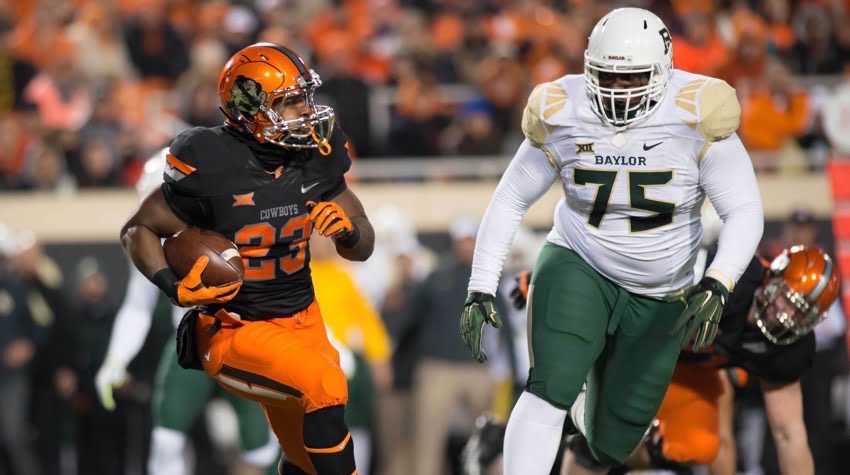
The last in our weekly look at how Oklahoma State can make its run game great again.
Part 1 — In the Zone
Part 2 — Spread It Out
Ensure Numbers Advantage
Just because a team is in a spread-out formation like we looked at in Part 2 doesn’t mean that they are going to have success. There were many times when the Cowboys tried formations like the ones above and they didn’t work, but there’s a good reason for it.
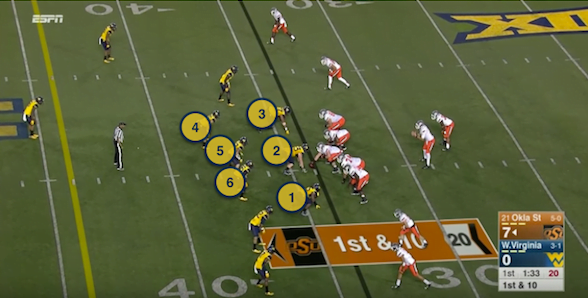
Take this still from the Pokes’ game against West Virginia. They may be in a spread formation, yes, but the defense crowds the box and the offense can’t do anything about it. WVU has six against OSU’s five, and the Cowboys’ disadvantage leads to a disappointing result.
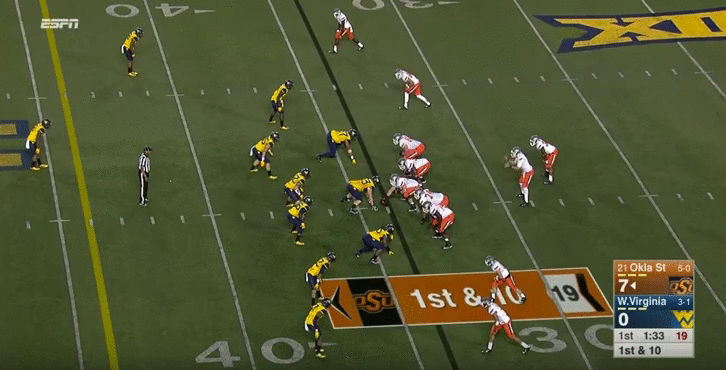
So if the offense doesn’t have the numbers advantage in the box, it is counterintuitive to run the ball; this is a given. But with the pace of modern offenses, hardly any teams actually audible anymore. Rather, they just attach routes to the receivers to give the quarterback an out if the defense commits to the run. This ensures that when they do run the ball, they have advantageous numbers.
These ‘attachment’ plays are called RPOs. RPOs, or run-pass options, are frequently used to take advantage of overly aggressive defenses. Pre-snap run-pass options are used to punish defenses that overcommit to either covering the run or the pass. The Cowboys don’t always use RPOs, but when they do, they usually fare well. Let’s take a look at an RPO example from OSU’s game against Kansas State.
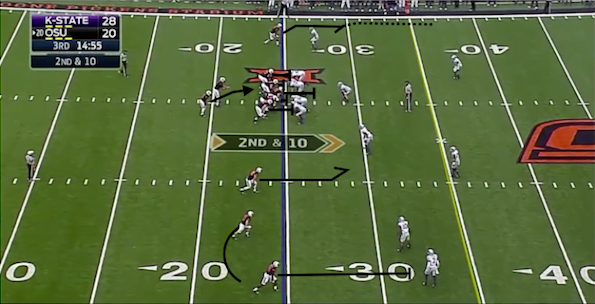
This is a play that the Cowboys successfully used multiple times against the Wildcats in their game last season. It’s one they stole straight from Baylor — an inside run play, either an inside zone or dart play, and a bubble–stick combo on the trips side with a ‘gift’ route on the backside.
This might sound complicated, so let’s break it down. The inside slot on the trips side is running a stick route and the outside slot is running a bubble with the outermost receiver blocking downfield. The backside receiver runs a route that is designed to beat single-man coverage. This varies from team to team, but it is usually a quick curl or slant/bang route. If the corner presses, though, it is understood by both the receiver and the quarterback that he is to run a fade down the sideline, as none of those short routes would work against press coverage. The linemen and running back treat it as a regular inside run play. Now it’s the quarterback’s job to decide where his numbers advantage is.
If the defense stacks the box and leaves two corners on three receivers, he should throw to one of the receivers on the trips side. Here’s a look at it with trips on the other side of the field.
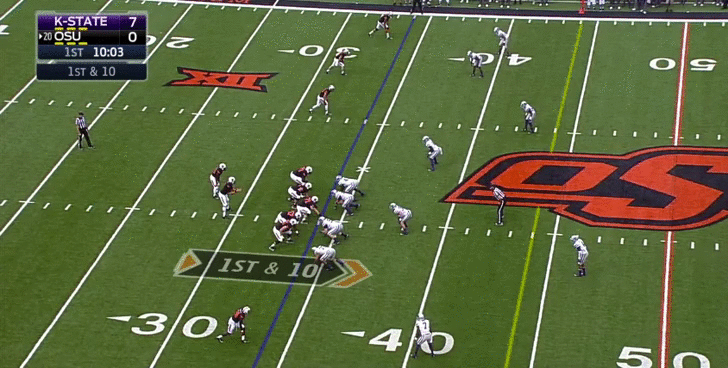
If the defense plays base with only five in the box, the quarterback should hand it off to the back up the middle.
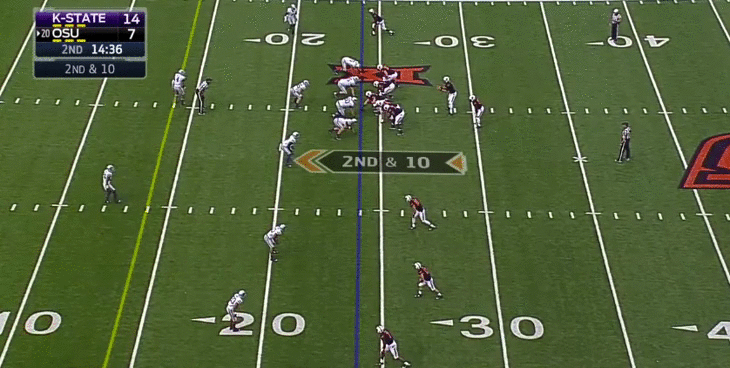
And if the defense both covers all three of the receivers on the trips side and brings a safety down into the box, the quarterback should throw to his isolated receiver on the weak side.
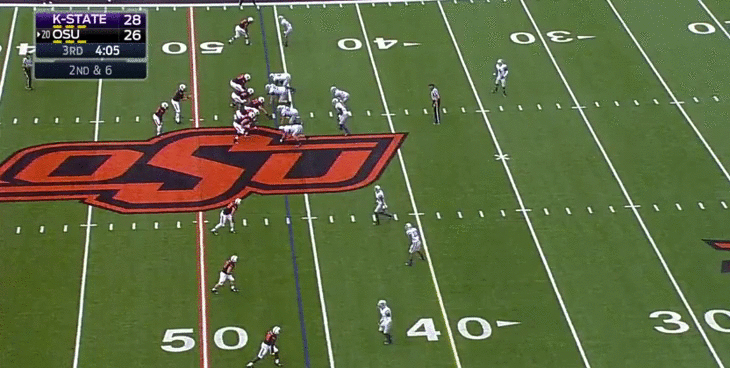
So if the defense doesn’t cover the trips side in anticipation for the run, Rudolph has an easy out and can both avoid a negative run play and gain yardage without having to audible. Remember: even though RPOs sometimes end in passes, they ensure that when you run the ball, you do so against a favorable front. And sometimes, especially with a struggling offensive line, this all may be for naught. You might get the perfect advantage, only to have a lineman miss a block for a tackle for loss. But that’s why a lot of RPOs use either angles ( like the dart, which we will cover in the future) or double teams (iso, double on 3 technique, which we will also cover later) to their advantage. Plus, you can’t think that way as a coach. A play may be only perfect on a chalkboard, but that’s all that they can do; it’s the players’ job to execute.
So those are just three ways that the Cowboys could aid the run game this season. They’ve shown all three before, so don’t be surprised if they use them a bit more in 2016. The coaching staff has shown the ability to make necessary changes leading up to the first game; let’s just hope that the lineman are getting ready as well.

-

 Football4 days ago
Football4 days agoIndiana Running Back Transfer Trent Howland Commits to Oklahoma State
-

 Hoops3 days ago
Hoops3 days agoUCF Transfer Marchelus Avery Commits to Oklahoma State
-

 Hoops5 days ago
Hoops5 days agoBryce Thompson Announces Return for 2024-25 Season
-

 Hoops5 days ago
Hoops5 days agoPFB+ Q&A: Robert Jennings II Discusses Oklahoma State Commitment






